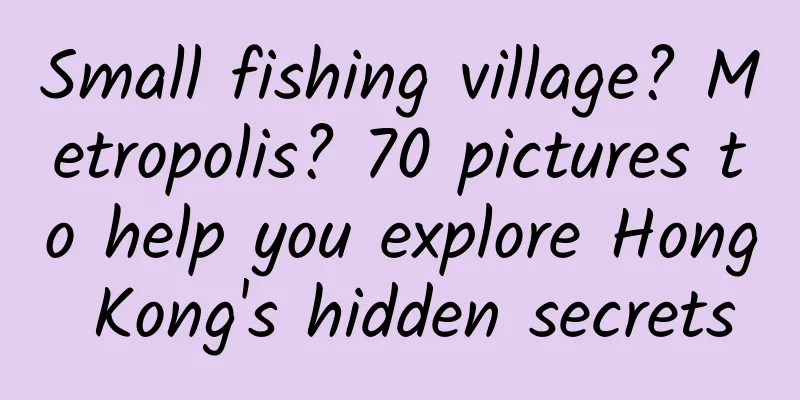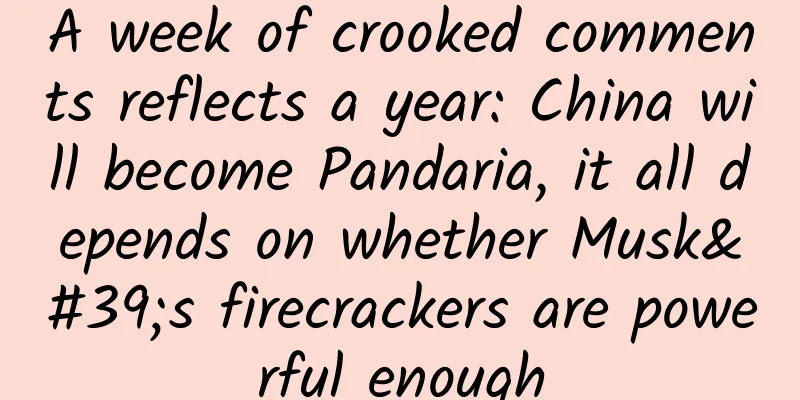Small fishing village? Metropolis? 70 pictures to help you explore Hong Kong's hidden secrets

|
When you stand on the streets of Hong Kong Will feel deeply How dense can a city be? (High-rise buildings in Kowloon Bay, Hong Kong, image source: @Visual China) ▼ One of the most densely populated cities in the world Population per square kilometer in urban area Up to 25,684 people 5.9 times that of Beijing 4.6 times that of Shanghai Even Singapore, a small country The population density is less than half of that (Mong Kok is one of the most densely populated areas in Hong Kong, picture source @Visual China) ▼ Many cities are hampered by economic development In Hong Kong land But it becomes the big hand that determines its growth Force the whole city Up, Up, Up Until a piece of grass grows straight into the sky “Urban Forest” (Hong Kong Urban Forest, photographer @静言) ▼ The city seems to be the whole background of Hong Kong but Is this really the case? If we look at Hong Kong from a farther and higher perspective You will find More of Hong Kong's land belongs to mountains and seas They came from all directions and occupied 3/4 of Hong Kong And wrap the city tightly in its arms (Please watch in horizontal mode, Hong Kong's mountains and sea, image source: @Visual China) ▼ The mountains and seas are magnificent Not only did he draw the beauty of nature Even the shape of the city itself was drawn Next Steps Let us unfold this picture of Hong Kong together At the southern tip of mainland China, on the northern shore of the vast South China Sea There is an island hill with land and sea Here the mountains are steep and the bay is deep and narrow Hong Kong is located in this sea of mountains. (Please watch in horizontal mode, looking at the island city of Hong Kong from an airplane, photographer @陈碧信) ▼ If you look closely You will find that Hong Kong is actually composed of three parts: A Peninsula - Kowloon A big island - Hong Kong Island The land north of Kowloon and the remaining 262 islands - the New Territories In the early days, there was a small port for transporting spices. Hence the name "Hong Kong" (Please watch in horizontal mode, Hong Kong's location and topography, drawn by @松楠) ▼ This is not a good place to build a city. Crustal movement and water erosion in ancient times Hundreds of peaks have been created throughout Hong Kong They are high and low Occupies 80% of the land For example, Hong Kong’s early development core It is a steep rocky island. As much as 82% of the land is mountainous Mountains running east-west in the central region Divides the island into north and south halves Among them, Taiping Mountain is 552 meters above sea level. Overlooking the bustling city from a high vantage point (Please watch horizontally, Victoria Harbour under the Peak, picture source: Visual China) ▼ On the other side of Hong Kong Island Backed by a series of mountains from west to east They are not high, but they move like dragons. It is said that the name "Kowloon" comes from this Among them, Lion Rock is famous Many early immigrants from the interior built houses at the foot of the mountain. The first stop in a foreign land They left their hometown and started from scratch Build a new life in this new city This fighting spirit was later named after this mountain. Become a legacy in the blood of Hong Kong people "Lion Rock Spirit" (Hong Kong under Lion Rock, image source: Visual China) ▼ Kowloon further north The largest part of Hong Kong This is where Hong Kong's most extensive lowlands and highest mountains are found. Tai Mo Shan At an altitude of 957 meters Become the highest point among the peaks (Tai Mo Shan is located in the central part of the New Territories, picture source: Hong Kong Tourism Board) ▼ Outside it It is guarded by a series of mountains running from northeast to southwest. They even cross the sea Lantau Island, an island on the left side of Hong Kong Island Phoenix Mountain on the island At a height of 934 meters Taking the second seat among the mountains (Phoenix Mountain, picture source @Visual China) ▼ Hundreds of mountains across the country Shaping the skeleton of Hong Kong They are not high The height changes very rapidly This outlines the various mountain lines. The sharpest of them Anaconda Point , Fisherman , Qingshan Known as the "Three Peaks of Hong Kong" (Hong Kong Anaconda Point, image source @Visual China) ▼ And the representatives of the steep and rugged Fei Ngo Shan Jagged cliffs Only the brave can climb to the top to enjoy the magnificent view of the mountain city (Hong Kong Fei'e Mountain, the mountains and sea are steep, please pay attention to safety when watching, photographer @Qu Wenben) ▼ There are also those with flat terrain Dadongshan The mountaintop stretches gently The setting sun shines on the grass The scenery is so beautiful that it lives up to its English name. Sunset Peak (Sunset at Tai Tung Shan, Hong Kong, image source: @Visual China) ▼ The steep mountains stand in a staggered manner Hundreds of streams rush through the mountains and valleys The rapid waterfall flows down the mountain (Bride's Pool Waterfall in Hong Kong, photographer @鹿葉青) ▼ Slow flow into a river (Wu Tong River in Hong Kong, image source: Visual China) ▼ Bringing out the graceful beauty of Hong Kong’s peaks Each mountain has its own unique colors The ocean that followed And then I splashed ink on this mountain bone Another picture scroll emerges After the mountain is formed About 10,000 years ago, the sea level gradually rose. It fills up valleys Forming a deep and wide harbor (Aerial photo of Victoria Harbour in Hong Kong. It was originally an extension of the mountain range, but was later submerged by the sea due to the fracture and sinking of the mountain, forming a harbor. Photographer: @吴亦丹) ▼ Flooding the mountain Forming a thousand-fold island (Please watch in horizontal mode, aerial photography of the mountains and outlying islands in Sai Kung, Hong Kong, image source: @Visual China) ▼ In the long years that followed The waves continue to wash over the peaks Shaped the steep and magnificent coast Stormy waves Rocks are eroded Then there are the magnificent and deep caves (The Kapok Cave in Sai Kung, Hong Kong, was originally a cave formed by erosion by the sea waves. The continued erosion of the sea waves opened up the caves on both sides, and today it has become a sea arch. Photographer @鹿葉青) ▼ The rock was broken through Forming an arch bridge across the sea (The bell arch in Sai Kung, Hong Kong, photographer @廖庆强) ▼ Rockfall The steep cliffs are exposed (The cliffs of North Guozhou in Hong Kong are steep and dangerous. Please be careful when viewing. Photographer @Tibby) ▼ Where the wind and waves are the strongest The sandy debris formed by the rock crushing is deposited Over time, it has formed The beach is wide and the sand is soft Big Wave Bay (Big Wave Bay is a famous surfing resort, photographer @SOY) ▼ The sea's masterpieces are more than that It also cooperates with another force Drawing Hong Kong's more unique underwater landscape This force appeared earlier than the mountains and the sea. Hong Kong was still a A plain with a network of rivers The river carries a lot of sand and mud Slowly deposited into rock layers Then, in the countless squeezing of the earth's crust, The rock layers changed from horizontal to vertical at the coast. One of the oldest rocks in Hong Kong "Ghost Hand Rock" (Ghost Hand Rock in Wong Kok Tsui, Hong Kong, photographer @顾天泽) ▼ This force from the Earth's crust continues to shape the surface It makes volcanoes erupt Hot lava flows across the earth After cooling, light-colored hexagonal rock columns are formed. They stand on the seashore It has become a rare "Ten Thousand Pillars Coast" in the world (The light-colored hexagonal rock pillars of Po Pin Chau. The distribution area of hexagonal rock pillars in Hong Kong exceeds 100 square kilometers, which is the largest in the world. Photographer @阿东Dol) ▼ In the days that followed Hong Kong has experienced Long drought In hot environment Dehydration and oxidation of iron in rocks Forming the unique "Sea Danxia" (The reddish-brown conglomerate and siltstone landforms on Chek Chau Island in Hong Kong are known as the "Danxia on the Sea", image source @wikimedia commons) ▼ Also experienced Alternating wet and dry periods The sediment in the new lake is deposited Layer upon layer, forming the youngest rock formation in Hong Kong (Sea erosion platform on Tung Ping Chau, Hong Kong Island. Tung Ping Chau has the youngest rock formation in Hong Kong. Image source: Hong Kong Tourism Board) ▼ Until the mountains rise Rising sea levels Mountains, seas and traces of early geological changes Together they form the magnificent landscape of Hong Kong. It also provides a habitat for thousands of creatures. This is the Butterfly Museum The warm and humid climate makes the mountains and forests It gathers 11% of all butterfly species in China. Butterflies can be seen all year round (Butterflies in Hong Kong, image source: Visual China) ▼ This is also a bird paradise Near the Shenzhen River estuary Mai Po and Deep Bay Wetlands It is an important stop on the migratory route of migratory birds. Providing habitat for more than 60,000 water birds each year As early as 1995, it was listed as an "internationally important wetland". (Mai Po Wetland, Hong Kong, photographer @李霖) ▼ This is also a treasure trove of the ocean With only 0.03% of China’s ocean area It supports 26% of the country’s marine species. These include the first-class protected species Chinese white dolphin (Hong Kong Chinese white dolphin, photographer @Wu Ying/Qi Ye China) ▼ The earliest human inhabitants appeared in Hong Kong about 5,000 years ago Then, to avoid the war Immigrants have come to Hong Kong to settle down Among them, the most famous immigrants are those with the surnames Deng, Hou, Liao, Peng and Wen. They live in the New Territories Collectively known as the "Five Major Clans in the New Territories" Different ethnic groups lived together and built walls for self-defense Establishing many defensive villages (Hong Kong Lai Chi Wo Hakka Village, photo source @Visual China) ▼ These new immigrants Academies, ancestral halls, and temples were built one after another. More people came in the following era They built a City of Mountains and Seas Early 19th century After Britain seized Hong Kong Island from China Selected place of residence It is the narrow coastline in the north of Hong Kong Island. It is bordered by Mount Taiping, Mount Gough and Mount Cameron to the south. Kowloon Peninsula in the north protects against typhoons The harbor is deep and wide, making it a good place to settle down. (Please view Victoria Harbour in horizontal mode, photographer @王鹤) ▼ Thus, a snake-shaped city began to grow along the coast. The middle part of the coast is inhabited by Europeans A collection of European architectural styles Governor's residence, church, courthouse Today it is still a government agency and cultural activity center. Known as "Central" (The Hong Kong Court of Final Appeal Building was designed by a British designer who designed the facade of Buckingham Palace. Photographer: Hu Wendi) ▼ In sharp contrast is the It is located on the west side of Central It is where the Chinese live The building is also full of traditional Chinese characteristics There are not only many Chinese temples There are also the characteristic residences of the Chinese, the "Tanglou" (The representative of the tenement buildings in Kowloon, Hong Kong is Lei Sheng Chun Tang. It is only used for illustration here. Tenement buildings are typical residential styles of early Chinese people. They are usually two to four stories high, with narrow fronts and long depths. Image source: Visual China) ▼ To connect everywhere A main transportation line parallel to the coastline and connecting east and west was built. Queen's Road (Queen's Road Central, Hong Kong, photographer @宋子麟) ▼ North-south streets leading to Queen's Road Also spread along the mountain Many bends and narrow They are so steep that they become real Stairway between mountains and sea (The long staircase in Wan Chai, Hong Kong, built along the mountain, photographer @DaninSum) ▼ This long, winding city is the original Hong Kong: It crouches at the foot of the mountain Masts line the seashore Rows of houses rise up the hillside like terraces. The winding and narrow roads run through it. (19th century oil painting of Victoria Harbour, image source @wikimedia commons) ▼ However, this narrow strip of land between the mountains and the sea is too tight. As for Taiping Mountain It is only 1,200 meters away from the sea. This new city is destined to breathe hard in the gap between the mountains and the sea. As millions of people gradually poured into this new city The island has reached its capacity So people began to move mountains and fill the sea Creating new land along the coast This project started as early as 1850. A total of 78 square kilometers of land was created It is equivalent to recreating a "Hong Kong Island" (A lot of land in Wan Chai, Hong Kong is reclaimed from the sea, and today it is part of a prosperous city. The above reclamation area statistics are as of 2022. Photographer @赵高翔) ▼ The city's boundaries are expanding outwards It soon spread to the Kowloon Peninsula and the New Territories across the sea. Residential buildings, docks, railways and airports soon filled up the land in Kowloon. Another city core is rising (Sketch of the expansion of Hong Kong's built-up area, drawn by @松楠) ▼ But that's not enough Cities must change It began to grow vertically, looking for space upwards The building climbs up the mountain and grows in the gaps of the mountain peaks. (Hong Kong Huajing Villa, photographer @帽匠HatterWei) ▼ The invention of elevators and steel frames It also makes high-rise buildings possible From 1966 to 1973 Hong Kong's tallest building record has been broken many times From the 28th, 31st, 34th floors Finally surpassing the monumental 100 meters (The tallest buildings in Hong Kong over the years, drawn by @王申雯) ▼ An ultra-high-density vertical forest is gradually emerging In Hong Kong, residential and commercial buildings over 30 stories high can be seen everywhere. Skyscrapers with a height of more than 100 meters in 2019 A staggering 2,580 seats Become the world's first (High-rise buildings near Sheung Wan, Hong Kong, photographer @Chengxin) ▼ How to build a city between mountains and seas Hong Kong has the answer It must carefully arrange every inch of space in the hand So vertical and compact In the 1950s and 1960s, the government built high-density housing The four corners are square and the residential units are arranged in parallel Choi Hung Estate in Kowloon is a typical example. It consists of several buildings no more than 20 floors. Accommodates more than 40,000 people (Ping Shek Estate, only for the interior of the public housing estate, photographer @你七哥) ▼ More forms of high-density buildings continue to emerge The factory is folded into a high-rise building (Old factory building in Hong Kong, image source: @Visual China) ▼ The basketball court is folded into the high-rise building (Hong Kong's aerial basketball court, image source: Visual China) ▼ Even the stables of Hong Kong's popular horse racing Also folded in high-rise buildings (High-rise stables in Hong Kong, image source: Visual China) ▼ The narrow commercial street is filled with various shops. They occupy limited space This has led to the dense variety of shop signs on Hong Kong's streets. (Various signs densely packed on the streets of Kowloon, Hong Kong, image source: @Visual China) ▼ In such a vertically tight space Private cars are extremely compressed 90% of travel in Hong Kong relies on public transportation The narrow streets even gave rise to The narrowest tram in the world Ding Ding Car (Hong Kong tram "Ding Ding Car", width is only 1.98 meters, photographer @王楠) ▼ Slender lines overlap and flow in this three-dimensional city They are for pedestrians to walk around (Glenella Bridge in Hong Kong, photographer @帽匠HatterWei) ▼ Shuttle bus service (Hong Kong bus crossing Queen's Road Hill Road Bridge, photographer @胡文迪) ▼ For car traffic (Hong Kong Causeway Bay flyover, photographer @鹿葉青) ▼ At the same time, the city is trying to find as much space as possible. So it is very close to the mountains and seas : The city is scattered between the mountains and the sea Ferries, bridges and tunnels through the alpine harbor Connecting islands Islands and mainland (Looking at Ting Kau Bridge from the foot of Tai Mo Shan, Hong Kong, photographer @君言) ▼ The famous "Star Ferry" shuttles between Victoria Harbour between Kowloon Peninsula and Hong Kong Island The mountains on both sides are tall and there are tall buildings everywhere. Becoming Hong Kong's most unforgettable "dual city" landscape (Viewing the two sides of the Taiwan Strait from the Star Ferry, photographer @王琪) ▼ At the same time, Hong Kong's buildings are scattered along the mountains. Outdoor escalator leading to Mid-Levels It is easy to switch between the bustling city and the green hillside. (Escalator in Mid-Levels, Central, Hong Kong. In 1998, Hong Kong was the city with the highest per capita share of escalators in the world. Image source: @Visual China) ▼ At this point, Hong Kong has finally grown from a small fishing village into a city that reaches the sky. Urban Forest The older generation of Hong Kong people started from scratch, so they believe in more work, more pay. The high-density urban network highly condenses the rhythm of life So Hong Kong people value efficiency They walk fast and cut hair fast Even eating is done at a very fast pace. (The table turnover efficiency of Australia Dairy Company in Hong Kong is extremely high. It is said that the fastest order can be completed and the dishes can be served within 30 seconds. The waiters will use simple terms such as "tea walk" and "fly edge" to complete the quick order. Image source: @wikimedia commons) ▼ When they leave the city Just a short journey It will completely slow down Because they stepped into another world In the purer natural countryside Among the towering mountains, beside the vast ocean Relaxed hiking [haang saan] (Hiking in Hong Kong, picture source: Visual China) ▼ Hiking is a Cantonese word It is not only mountain climbing More like walking in nature It has now become a regular routine for many Hong Kong residents After all, three-quarters of the land outside the city There are still many well-preserved mountains and seas. Hong Kong is facing water shortage Numerous ponds have been built since 1863 to collect rainwater. To reduce rainwater runoff Most of the mountainous areas are designated as water catchment areas It is prohibited to build houses or cultivate land in the area. At the same time, plant trees and restore the ecology (Tai Lam Chung Reservoir, Hong Kong, image source: Visual China) ▼ The High Island Reservoir built in the sea in 1978 It is the largest reservoir in Hong Kong. Today, there are more than 20 ponds scattered everywhere. Has become part of the mountains and sea (Aerial photo of High Island Reservoir in Hong Kong, built by enclosing the coast with a dam, photographer @Yu Ming) ▼ Moreover, since the 1960s Hong Kong began to set up country and coastal parks to protect this mountain and sea area. Relevant protection regulations have been issued one by one The first country park in Hong Kong in 1977 Shing Mun Country Park was born (Shing Mun Country Park, photographer @鹿葉青) ▼ The first batch of coastal parks and coastal reserves were demarcated in 1996 (The Hok Tsui Coastal Reserve is the first designated coastal reserve, photographer @胡鑫沛) ▼ These natural landscapes lazily surround the city They are even planned into more than 100 different types of hiking trails. To cater to people with different hobbies For example, the MacLehose Trail, the longest trail in Hong Kong Across mountains and seas Listed in National Geographic's 20 Best Hiking Trails in the World (Second section of the coastline of MacLehose Trail in Hong Kong, photographer @宋子麟) ▼ besides There is also a cultural trail to experience the traditional fishing village (Tai O Fishing Village, Hong Kong, image source @Visual China) ▼ and hiking trails through forests and ponds. (Lew Shui Hiking Trail, Pat Sin Leng Country Park, Hong Kong, photographer @彭浩山) ▼ This city grew in the gap between the mountains and the sea. Surrounded by more mountains and seas It has grown into a real "city of mountains and seas" (Hong Kong city is closely connected with mountains and sea, photographer @鹿葉青&帽匠HatterWei) ▼ So we see: The mountains and peaks outline the contours of the earth There are thousands of peaks in Hong Kong The rough sea splashes the colors of the earth There is Hong Kong's coastline In the gap between the mountains and the sea Urban forests grow wildly, reaching into the sky That is the bright lights of Hong Kong (Busy Hong Kong, photographer @泓Sam) ▼ The magnificent creations of nature and the pinnacle of human wisdom In the same picture Perfect fusion yet each with its own unique features Who said this contrast, this fusion Not beautiful, not moving? (Fei'e Mountain, the mountains and sea are steep, please pay attention to safety when viewing, photographer @Hong Kong Landscape Photographer Kelvin Yuen) ▼ This article was created by Written by : Xiang Bu Xiang Image : Long Shijie Design : Wang Shenwen Map : Song Nan Review : Ding Ding & Li Chuyang & Chen Jingyi Cover Photographer : Wang He & Li Hanqing 【References】You can scroll up and down to view [1] Shelton, B., Karakiewicz, J., & Kvan, T., Hong Kong: A Story of City Building[M]. Beijing: Publishing House of Electronics Industry, 2013. [2] Ho Pui-ran. City Tradition and Innovation: A History of Hong Kong’s Urban Planning Development 1841-2015[M]. Zhonghua Book Company (Hong Kong) Limited, 2016. [3] Lu Dale, Ohashi Kenichi. Urban Contact: Observations on Hong Kong Street Culture[M]. Commercial Press (Hong Kong) Limited, 1992 [4] Peng Qirui, Xue Fengxuan, Su Zelin. Geography of Hong Kong and Macao[M]. Beijing: Commercial Press, 1991.01. [5] Li Zuoming, Lin Jifeng. Discussion on geological structural characteristics of Hong Kong[J]. Journal of Guizhou Institute of Technology, 1987(04):52-66. [6] Wang Lulin. Discussion on the types of geological relics in Hong Kong and the causes of their formation[D]. China University of Geosciences (Beijing), 2010. [7] Hu Enwei. Hong Kong Style[M]. TOM (Cup Magazine) Publishing Limited, 2005. [8]Ng, Terence PT, et al. Hong Kong's rich marine biodiversity: the unseen wealth of South China's megalopolis[J]. Biodiversity and conservation 26.1. 2017: 23-36. [9] Ke Jiamin, Neil Fifer, Ou Zijian, and Hong Dunxi. Mai Po Wetland: A Check-in Site for Migratory Birds[J]. Forests and Humans, 2021(07):108-115. |
<<: Urgent reminder! Don’t wear yellow or green clothes when going out!
>>: Warning! These 3 things can easily cause sudden death. Come and see if you are doing it right?
Recommend
New media operation: How to build your own internal and external matrix?
In this article, the author will talk to you abou...
During the Chinese New Year, the power of this thing is second only to the sugar orange →
Meatballs, also called dumplings, represent perfe...
[Creative Cultivation Program] The small world in the intestines is also full of blood and gore. How can we eat well to help intestinal probiotics take over?
The human heart weighs about 300g, the brain weig...
The Pacing algorithm behind Facebook's advertising system
[[163141]] Last month, Facebook released its eye-...
Go Hack 2017 registration is open: a Go language brain-burning battle in Shanghai in October
Donald Knuth said in his speech when he received ...
Using RenderScript to achieve Gaussian blur (frosted glass/frosted) effect
Preface When browsing Instagram, I accidentally d...
Are cats naturally aloof? They actually care about their owners!
Yesterday was International Cat Day (August 8th e...
Baidu search account setup process!
A good account structure, like a solid foundation...
Common performance optimization techniques in iOS development
What are the main causes of performance issues? T...
If I sleep three or four hours today and more than ten hours tomorrow, can I make up for it?
One minute with the doctor, the postures are cons...
How to quickly customize and develop a WeChat applet? How much does it cost?
How to quickly customize and develop a WeChat app...
The other side of the layoff wave: Don’t want to “roll” anymore, want to be “N+1”
Yuan Dian clearly remembers that the number of pe...
China Space Day丨See these Chinese "stars" shining in space
52 years ago, China's first artificial satell...
Snack industry Douyin self-broadcast promotion strategy
During this year’s Double 11, many leading snack ...









